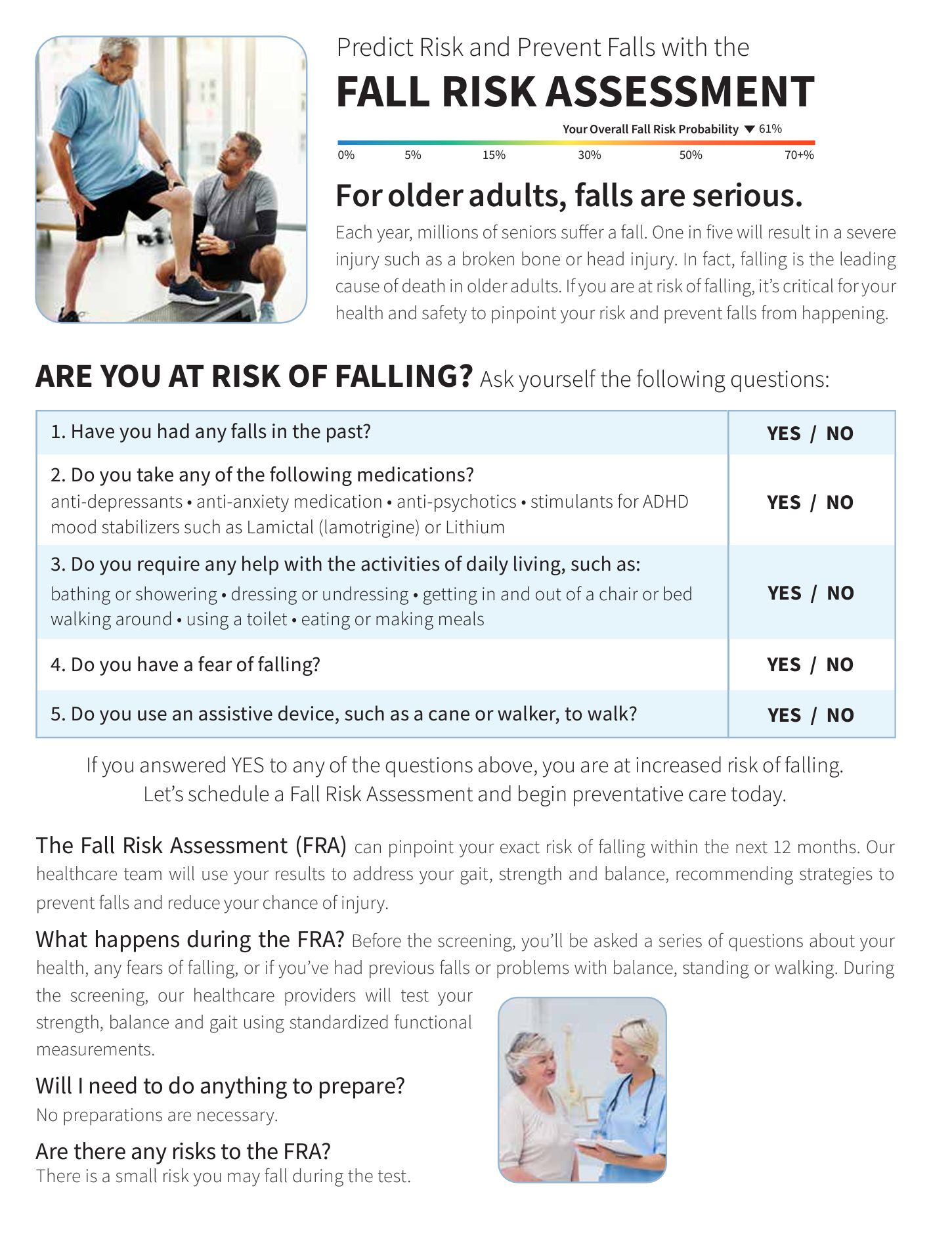Dementia Fall Risk Things To Know Before You Get This
Dementia Fall Risk Things To Know Before You Get This
Blog Article
All about Dementia Fall Risk
Table of ContentsUnknown Facts About Dementia Fall RiskThe Facts About Dementia Fall Risk UncoveredSome Known Incorrect Statements About Dementia Fall Risk Dementia Fall Risk Fundamentals ExplainedAn Unbiased View of Dementia Fall Risk
You could be nervous due to the fact that you've had a loss before or due to the fact that you've discovered you're beginning to feel unstable on your feet. You might have seen changes to your health, or simply feel like you're decreasing a little. Whatever the factor, it isn't unusual to come to be cautious and lose confidence, and this can quit you doing things you made use of to do and make you really feel much more separated.If you've had a loss or you have actually begun to really feel unsteady, tell your medical professional even if you really feel great or else. Your physician can examine your balance and the way you stroll to see if improvements can be made. They might have the ability to refer you for a falls risk evaluation or to the drops prevention service.
This information can be obtained via interviews with the individual, their caregivers, and a testimonial of their medical documents. Begin by asking the individual concerning their background of drops, including the frequency and situations of any current falls. Dementia Fall Risk. Inquire about any kind of mobility troubles they may experience, such as unsteady or trouble walking
Conduct a thorough testimonial of the person's medicines, paying certain interest to those known to increase the risk of falls, such as sedatives or medications that reduced high blood pressure. Determine if they are taking numerous drugs or if there have been current modifications in their medicine regimen. Assess the person's home setting for prospective risks that could raise the threat of falls, such as inadequate lights, loosened carpets, or absence of grab bars in the restroom.
Some Known Factual Statements About Dementia Fall Risk
Guide the person via the loss threat analysis form, discussing each question and tape-recording their reactions precisely. Determine the overall threat rating based on the actions given in the analysis form.
This strategy may consist of workout programs to boost toughness and balance, medication changes, home adjustments, and references to other professionals as required. Regularly monitor the individual's development and reassess their threat of drops as required. Customize the care strategy based on changes in their wellness condition or home environment. Provide recurring education and assistance to promote safety and lower the danger of drops in their everyday living activities.
Several studies have actually shown that physical treatment can help to minimize the threat of falling in adults ages 65 and older. In a brand-new study (that looked at falls danger in females ages 80 and older), scientists calculated the economic effect of picking physical therapy to stop drops, and they located that doing so saves $2,144, including all the hidden expenses of your time, pain, missed out on life events, and the bucks spent for solutions.
Some Ideas on Dementia Fall Risk You Need To Know
Inspecting your heart rate and blood pressure measurements at rest and while you change placements (from resting or existing to standing). A simple examination of your reasoning (cognitive) capacities. Analyzing your equilibrium, stamina, and walking ability. An easy vision test. Assessing your feet and shoes. A home safety assessment. Based upon the evaluation results, your physiotherapist will make a strategy that is tailored to your specific demands.
Older adults that have problem strolling and speaking at the same time go to a higher risk of dropping. Dementia Fall my latest blog post Risk. To assist raise your safety during everyday activities, your physiotherapist may make a training program that will challenge you to preserve standing and walking while you do an additional task. Instances include strolling or standing while counting backwards, having a discussion, or bring a bag of grocery stores
Your physiotherapist also can recognize which activities you need to prevent to remain risk-free. Community-based drops prevention programs aid individuals to: Reduce their fear of dropping. Set objectives for boosting their physical activity. Make their homes more secure. Exercise extra to raise their toughness and equilibrium. These programs usually are led by volunteer instructors.
Facts About Dementia Fall Risk Uncovered

Measles, or rubeola, is a highly infectious, intense viral contagious condition brought on by the measles infection. Some people think about measles as simply a breakout and fever that clears in a couple of days; nonetheless, measles can cause major health and wellness difficulties, especially in kids more youthful than 5-years-old. The very best defense against measles is the measles, mumps, and rubella (MMR) vaccination.
Autumns are an usual reason of injury amongst older adults.
The Facts About Dementia Fall Risk Uncovered

She has no history of falls, her stride is stable, and she invalidates with no problems. The previous nurse states that she calls for aid to the bathroom when she needs to go.
Examples of typical fall interventions/measures Learn More consist of: Making sure a patient's vital things are accessible. Placing the individual's bed rails up with the alarm on. Helping a patient while they're rising from bed. Beyond recognizing exactly how to use the Johns Hopkins Loss Risk Analysis Tool, it is very important that facilities include its use right into a more thorough fall avoidance strategy.
Report this page